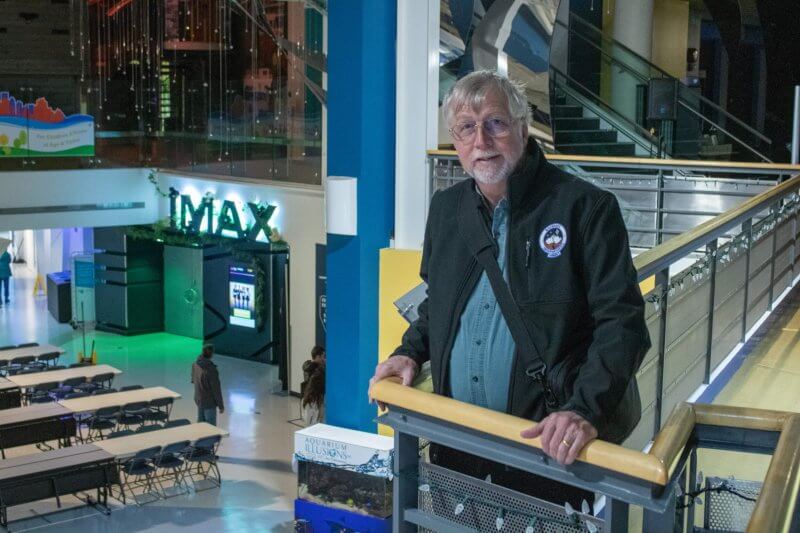Spending Earth Hour looking to the sky
Since 2007, the Earth Hour movement has caught the attention of people all across the world, in virtually every country.

On the last Saturday in March, which will be March 28 this year, participants are encouraged to switch off all their lights for one hour at 8:30 p.m. local time.
“This symbolic action is meant to help us look at our own energy use and its impact on the world around us,” said Dr. Martin Connors, a physics and space science professor at Athabasca University.
In the past this event has included public gatherings, but due to the global pandemic of COVID-19, participants are encouraged to instead celebrate digitally while maintaining social distancing measures such as avoiding large crowds.
But even if you’re marking Earth Hour alone this year, you don’t have to simply sit in the dark.
Connors, whose expertise in astronomy is internationally recognized thanks in part to his work with the Athabasca University Geophysical Observatory (AUGO), has some suggestions for things to do and things to think about while all the lights are out.
Stargazing
Although those of us living in northern latitudes know that it is not exactly dark at 8:30 p.m. at this time of year, there is still an opportunity for us to turn our eyes skyward and take advantage of the spring weather.
The moon and Venus, along with several winter stars, may be visible if the skies are clear. Winter stars are so named as during the summertime, the sun appears to move in front of them and they are not visible.
“We may have an opportunity to see winter stars with spring-like temperatures,” Connors said. “To add to it, for western Canada, the International Space Station will fly near the moon and Venus.”
He said the best time in Alberta to observe this is 8:40 p.m. Mountain Time.
Neither a telescope nor binoculars are required to appreciate what you might see in the night sky, although they may help to get a better look.
The best place to view the sky from North America, assuming social-distancing precautions don’t make it impossible, is to have a view of the southwestern horizon. The moon and Venus will be fairly apparent when facing this direction, and fairly close together.
Marking the distance between Venus and the moon, then looking five times that distance to the left of the moon, you will see Sirius, the brightest star in the sky.
“The famous Belt of Orion is about halfway between the moon and Sirius. Above it is the famous red star Betelgeuse,” Connors said. “Between and above the moon and Venus is the Seven Sisters star group also known as the Pleiades or Subaru, which the Japanese car brand is named for.”
Online resources, such as the star map at timeanddate.com or the Stellarium Astronomy Software from stellarium.org are great options for beginners. More advanced users may want to look at heavens-above.com, which has star maps and satellite predictions.
Learning more
Earth Hour also presents an opportunity for us to learn more about the world around us, and to seriously consider the impact of our daily activities on the planet.
One example of this is looking at global warming, and considering its impact on the planet’s climate and weather.
Connors said the winter variations in 2019, when a polar vortex created the situation where much of North America experience winter weather that was much colder than usual, provides an interesting example of this.
While the cold weather prompted some to question where global warming was even happening, in fact it shows just the opposite.
“Taking a larger view, if that air came down over North America, what filled the region it left?” he said. “You guessed it, warm air moved north. So while we were in unaccustomed cold, Alaska had a very warm winter.”
For a better understanding of this interrelationship of the weather forces on Earth, Connors suggested Geography 365: Atmosphere, Weather, and Climate course. It is a senior-level course, but has no prerequisites so is available to all learners.
“Even in the absence of polar vortices, Canadian weather and climate fascinate, so perhaps a good Earth Hour thought is to consider finding out more,” he said.
You can learn more about Athabasca University’s Programs and Courses, and get started today!
